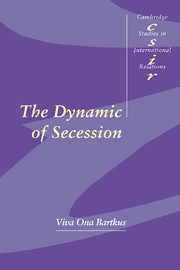4 - The costs of secession
Published online by Cambridge University Press: 22 September 2009
Summary
Due to perceived benefits of membership, most distinct communities do not consider secession as a viable option. But, if they were to consider secession, they would immediately run into a second barrier: the costs of secession. State opposition and international hostility can force a distinct community to give up its independence struggle or not to embark on one in the first place. Furthermore, these costs of secession are the most effective obstacle to success even if the distinct community continues its struggle. More often than not, states have effectively opposed secession attempts. And even if the secessionist community were to win on the battlefield, it still stands to lose the diplomatic contest. The principle of territorial integrity as one of the fundamental norms of post-1945 international relations limits secession as a means of altering existing borders. As a consequence, the international community has consistently withheld diplomatic recognition and the associated privileges from secessionist entities.
Secession involves an “arduous struggle.” State resistance to and international hostility toward secession contribute to its arduousness. John Stuart Mill described the Hungarian attempted secession from the Austrian Empire in 1848 as such an ardrous struggle. The combined forces of the Austrian and Russian armies defeated and then violently suppressed Hungarian aspirations for independence. Historically, the struggle for secession has often entailed dreadful costs in terms of lives and human suffering.
- Type
- Chapter
- Information
- The Dynamic of Secession , pp. 51 - 78Publisher: Cambridge University PressPrint publication year: 1999



